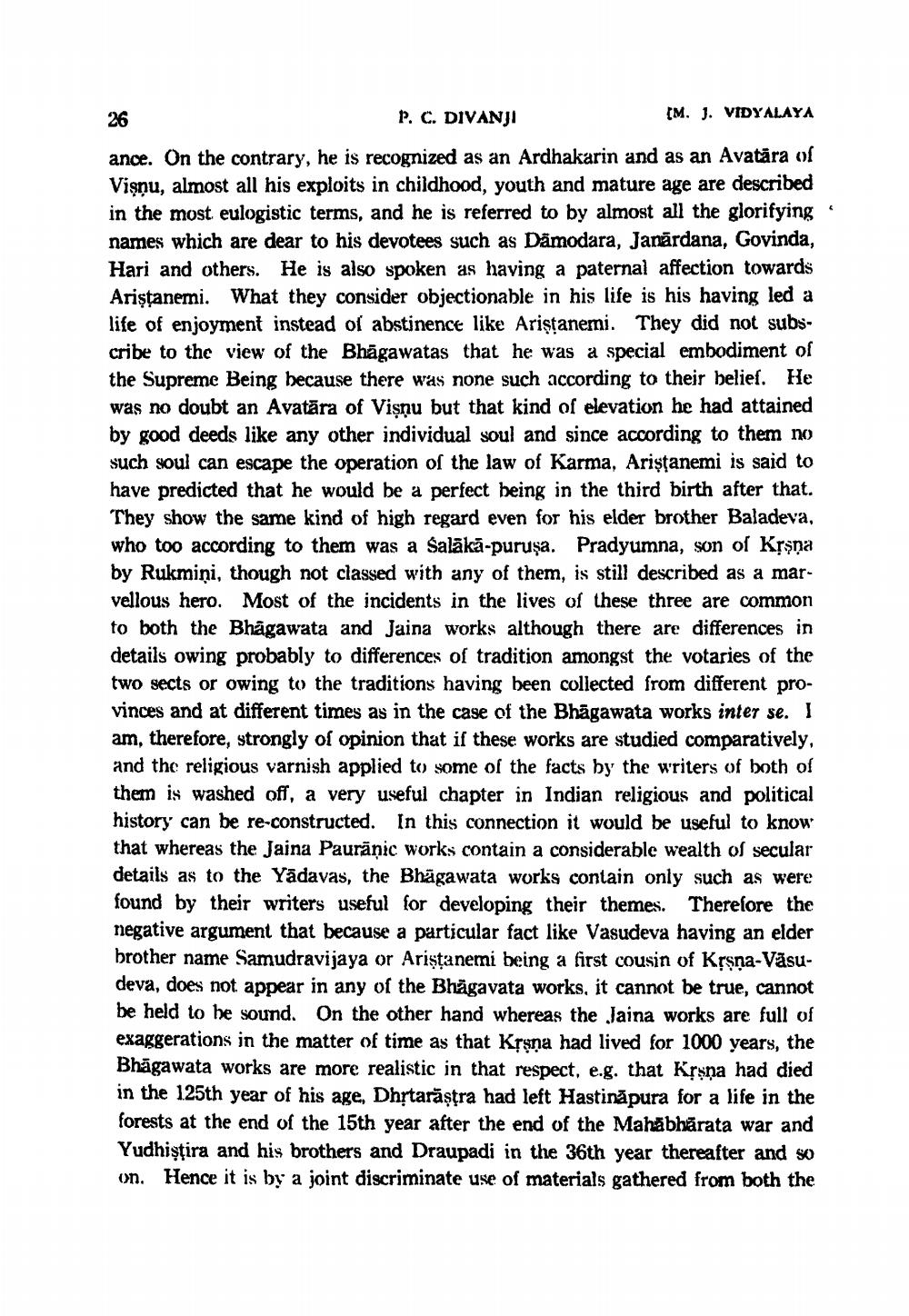________________
26
P. C. DIVANJI
[M. J. VIDYALAYA
ance. On the contrary, he is recognized as an Ardhakarin and as an Avatara of Vişņu, almost all his exploits in childhood, youth and mature age are described in the most eulogistic terms, and he is referred to by almost all the glorifying names which are dear to his devotees such as Damodara, Janardana, Govinda, Hari and others. He is also spoken as having a paternal affection towards Arişṭanemi. What they consider objectionable in his life is his having led a life of enjoyment instead of abstinence like Aristanemi. They did not subscribe to the view of the Bhagawatas that he was a special embodiment of the Supreme Being because there was none such according to their belief. He was no doubt an Avatara of Viṣņu but that kind of elevation he had attained by good deeds like any other individual soul and since according to them no such soul can escape the operation of the law of Karma, Aristanemi is said to have predicted that he would be a perfect being in the third birth after that. They show the same kind of high regard even for his elder brother Baladeva, who too according to them was a Salākā-puruşa. Pradyumna, son of Kṛṣṇa by Rukmini, though not classed with any of them, is still described as a marvellous hero. Most of the incidents in the lives of these three are common to both the Bhagawata and Jaina works although there are differences in details owing probably to differences of tradition amongst the votaries of the two sects or owing to the traditions having been collected from different provinces and at different times as in the case of the Bhagawata works inter se. I am, therefore, strongly of opinion that if these works are studied comparatively, and the religious varnish applied to some of the facts by the writers of both of them is washed off, a very useful chapter in Indian religious and political history can be re-constructed. In this connection it would be useful to know that whereas the Jaina Pauranic works contain a considerable wealth of secular details as to the Yadavas, the Bhagawata works contain only such as were found by their writers useful for developing their themes. Therefore the negative argument that because a particular fact like Vasudeva having an elder brother name Samudravijaya or Ariṣṭanemi being a first cousin of Kṛṣṇa-Väsudeva, does not appear in any of the Bhagavata works, it cannot be true, cannot be held to be sound. On the other hand whereas the Jaina works are full of exaggerations in the matter of time as that Krsna had lived for 1000 years, the Bhagawata works are more realistic in that respect, e.g. that Krsna had died in the 125th year of his age, Dhṛtarăṣṭra had left Hastinapura for a life in the forests at the end of the 15th year after the end of the Mahabharata war and Yudhistira and his brothers and Draupadi in the 36th year thereafter and so on. Hence it is by a joint discriminate use of materials gathered from both the
2




